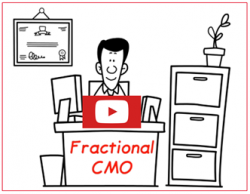Do You Know Frugal Frank?
In this issue:
Example Persona: “Frugal Frank”
 Male
Male- 40-45 years old
- College degree
- Earns about $60k annually
- Purchasing Manager
- “Features & benefits” guy
- Needs to feel important
- Asks for “special pricing”
- Says “it’s not in the budget”
- Asks a lot of questions
- Lives in a 3-bedroom house
- Married
- 2 kids under 12 years old
- Fishes on weekends
- Plays basketball 2 evenings a week
- Loves to talk about sports and politics
- Wants to buy a big boat/hot rod one day
Last month we discussed the necessity and benefits of segmentation, which is the process of dividing your target market into subsets, relative to your offering. Another important step that will augment the customizing of your message and marketing activities to match the needs and unique preferences of your segments, is the development of buyer’s personas.
A buyer’s persona is a semi-fictional representation of a “typical customer” that includes demographics, behavior patterns, motivations, their goals, and other characteristics. To construct your buyer’s person(s), you must know your buyer(s) very well.
This exercise of defining customer personas helps us understand our customers, and ultimately customize our messages and other marketing activities to be most effective.
The example on the right, of Frugal Frank, was created with the help of one of our clients to make sure we communicate the right message using the benefits, arguments, platforms, and so that are most likely to be effective. To create your own, start with persona(s) based on information of existing customers. Think of one (or more) of your ‘typical customers’, and describe them in a bullet list, using the suggested criteria below and other criteria you find useful.
If you have more than one ‘typical customer’, from different segments for example, just create and define more personas.
If you are considering targeting somewhat different personas as part of your future marketing efforts (company size, title within the company, etc.), create another set of ‘desired’ personas as well.
Criteria to consider when constructing a buyer’s persona:
|
|
Creating and defining buyer’s personas will help you in both marketing and sales. Buyer’s personas help us determine the most appropriate approach to help the prospect or customer through their buyer’s journey. Do you know your own ‘Frugal Frank’? Do you know your customers well enough to profile them?

Duke Merhavy, MBA, Ph.D.
President & Chief Marketing Officer
Marketing Lingo: “Brand and Branding”
Your organization’s brand consists of its name, logo, slogan, design scheme, symbol, and any other feature that identifies its offerings as distinct from others with similar offerings. The sum of the brand components is intended to represent the values, quality, ideas, and even the personality of the organization.
Branding is the process involved putting the brand components together, as well as establishing the brand, in order to create a unique and memorable impression for an organization or an offering in the customers’ minds. Branding aims to create and establish a significant and differentiated presence in the market that attracts and retains customers.
Brands in general, and successful ones in particular, represent considerable value. Organizations will go to great lengths to protect their brand. Organizations also spend substantial resources to promote their brand through various marketing efforts.
Regardless of the efforts put forth by any organization and its marketing team, the true brand of the organization and its offering is determined by the customers. In other words, what impression the market has of your brand, what people think of it, and what they understand it to be, is the brand.
‘Marketing Lingo’ is a regular column in which we define, or otherwise explain, terms often used in marketing but not necessarily correctly or properly by some
What Is Fractional CMO?
Hiring a full-time CMO (Chief Marketing Officer) is often not cost-effective for most small-to-mid-sized businesses (SMBs). We offer SMBs senior-level expertise, experience, and a holistic marketing approach, on a part-time basis for a fraction of the cost.
Fractional CMO is dedicated to your success, and our mission is to turn your vision into reality. Click on the short explainer video to the right for a quick explanation.
The following article was written by Barbara J. Luther of The Luther Law Firm, PLLC (read more about Barbara J. Luther below)
Branding – Its Legal Tending and Protection
Central to any marketing effort is the brand. We create a brand with great care, selecting words, symbols and colors that will send a specific, positive message to customers and others. In ads, brochures and websites, we feature it prominently. When someone tries to imitate it, we demand they cease and desist, pay damages and even run corrective advertising! But do we defend it in daily use? All too often not!
Do you give away the value and even ownership? You can avoid this with simple rules.
First, use the trademark consistently. Do you get bored using the same colors for the logo? The trademark registration may only cover certain colors. If a competitor sees you using your brand inconsistently, they may get creative, too and encroach on your space. Do you sometimes use one color (say on hats, not ads) instead of the registered colors AND use (R) indicating you own the black and white version when you only registered the colored trademark?
Second, identify your brand / trademark as unique, as YOUR property with TM or SM (product or service, respectively). When you start with that, you start to accumulate common-law trademark rights, even if you forget to file for a national trademark.
Third, file for a national trademark because once you put your business on the internet, your business and product have a national footprint. If you are in Arizona, people from all the rest of the United States can see it, as well as almost all countries (but the other countries impose a separate procedure).
For more tips on how to protect your intellectual property or to order your free copy of her booklet Barb’s Rules, go to www.thelutherlawfirm.com or call 480-315-6508.
Barbara Luther, an AV-rated patent attorney, frequently files copyrights and trademarks after consulting with clients to assure the protection fits the intellectual property and business needs. Her patents have been the basis of a $1 billion deal and a $34 million legal settlement. As an experienced product developer, sales trainer and marketer, and licensing attorney, Barbara is equipped with an unusually wide array of tools necessary to understand, protect and maximize the value of your business through timely protecting intellectual property not only within the United States but also abroad.
Take Advantage of Us
Give us a call at 888-412-2236 or click on the button below to request a complimentary Marketing Needs Assessment, or to ask us a question regarding your most pressing marketing or sales challenges.
